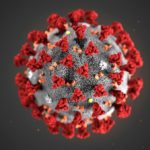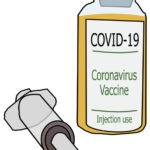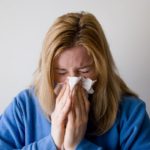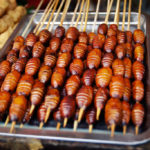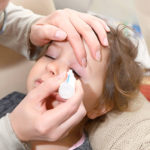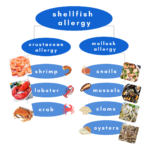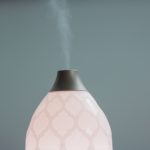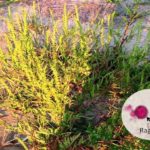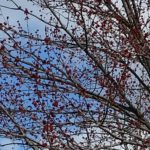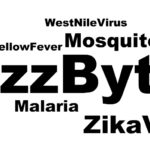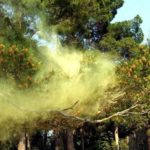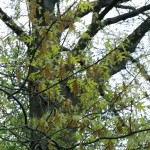The Start of Pollen Season in Philadelphia: Early Tree Bloomers
For interviews and tours of the Delaware Valley’s only certified pollen and mold spore stations for the National Allergy Bureau (NAB) certified pollen, ragweed, and mold spore counting stations in Philadelphia, PA and Mt. Laurel, NJ, please email gwoodlyn@asthmacenter.com
The Start of Pollen Season in Philadelphia: Early Tree Bloomers
Philadelphia, PA – Board Certified Allergist Dr. Donald Dvorin of The Asthma Center announced today, March 2, 2017, the start of the Delaware Valley pollen season.
What’s in the Air Now?
As the only official certified pollen and mold spore counter for the Delaware Valley, Dr. Dvorin observed very high levels of early tree pollen and high levels of outdoor mold spores in the first official air samples collected for our region. Juniper/Cedar tree pollen is the predominant pollen in the air currently (more than 87% of the tree pollen observed). Juniper/Cedar is one of the Delaware Valley’s “early bloomers.” Other “early bloomers” present are Maple and Elm tree pollen.
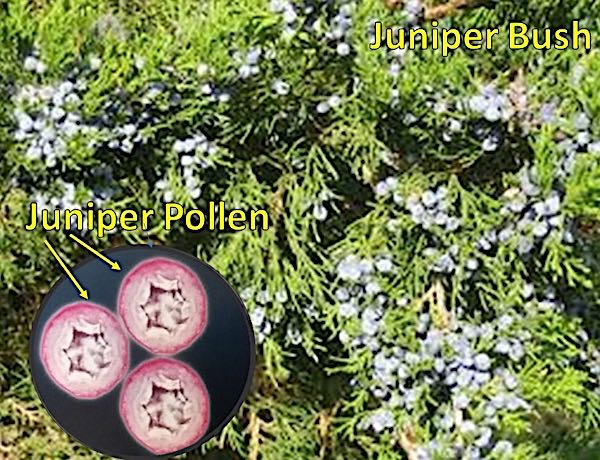
According to Dr. Dvorin, this early start to the pollen season is likely related to the trend of warmer than usual temperatures the Delaware Valley has been experiencing, particularly the consecutive warm “spring-like” days last week with temperatures climbing into the 70s. Colder temperatures, on the other hand, specifically prolonged periods of less than 40 degrees may “close up the buds” on trees temporarily.
Delaware Valley’s Official Pollen & Mold Spore Counts
Since 1992, The Asthma Center’s Allergist & Resident Pollen Expert, Dr. Donald Dvorin has monitored and analyzed our region’s air with Burkard pollen and mold air samplers. [See How We Count Pollen]
The Asthma Center has published pollen and mold spore data in peer reviewed medical journals and defined the relevant pollen and pollen seasons for Philadelphia and Southern New Jersey.
Throughout pollen season (early March through the fall), The Asthma Center operates two certified monitoring stations: one on a rooftop in Center City Philadelphia and the other atop a roof in Mount Laurel, NJ. Dr. Dvorin publishes daily pollen, mold, and ragweed counts through the spring, summer and fall which the region’s allergy sufferers rely on to help control and treat symptoms [Sign Up Here].
Dr. Dvorin has directly contributed to the field of pollen collection and counting for many years, and patients benefit directly from his work. Not only can allergy sufferers learn “what’s in the air,” the allergy specialists at The Asthma Center can test whether or not what’s in the air is triggering specific symptoms, for instance the tree pollen in the air today.
What to Expect for Philadelphia’s 2017 Pollen, Ragweed & Mold Season
“I’ll keep you as informed as I can about “what’s in the air,” so that you can be proactive about treatment, promises Dr. Dvorin and he added “Daily Counts are expected to begin Monday, March 6, 2017.” [Sign Up Here]
“Weather plays such a big role in the counts,” says Dr. Dvorin.
If current trends of warmer weather and windy conditions continue, we may see counts similar to 2016 when El Nino contributed to a spring pollen season with extreme levels present earlier than “normal” and more frequently than “typical.”
Dr. Dvorin reviewed the “start of pollen season” for the past 10 years and found that, generally speaking, pollen was present beginning the second week of March. During the majority of pollen season starts, tree pollen was observed at very high levels. However, in 4 out of the past 10 pollen seasons, extreme levels of tree pollen were observed within the first week, including 2016 when tree pollen was more than 2,000 pollen grains per cubic meter of air.
Dr. Dvorin on Pollen “Forecasts”
“Currently there is no published, scientifically validated model for pollen forecasting,” states Dr. Dvorin
Empirically, when The Asthma Center compares our pollen data with the forecasts that are promoted on the internet and phone apps, the correlation is poor. When The Asthma Center Board Certified Allergists take into account the symptoms experienced by the patients in our clinical practice, again, “the correlation with pollen forecasts is poor.”
“We are working on a forecast model at The Asthma Center for metropolitan Philadelphia,” stated Dr. Dvorin. “I’m not saying it’s impossible, but a validated, reliable predictive model is not available yet.
What’s the Deal with Pollen?
Trees and other plants reproduce by creating pollen grains, a fine “dust,” that is often visible to the naked eye (all that yellow or green dust on cars in the morning), but other times so small that it can only be seen under a microscope.
Not all pollen cause allergy symptoms, but those that do are light and can travel far on wind currents. Trees pollinate for two to three week intervals at various times and overlap with peaks observed in our region from late April through early May. Similar to tree pollen, grass pollen is produced as a means of reproduction and depends on wind currents to be transported. Airborne grass pollen appears in early April, peaks throughout May, and declines in June. The Delaware Valley also experiences a second burst of Grass pollen in September. Weed pollens are prevalent later in the summer, with Ragweed pollen a major culprit in our area.
Did You Know? Daily Pollen, Ragweed & Mold Spore Counts Direct to Your Inbox!
The Asthma Center’s daily Pollen, Ragweed and Mold Spore Counts, the Delaware Valley’s only official pollen, ragweed, and mold spore count station certified by the National Allergy Bureau are available via email. Subscribe to receive our daily counts by email or check out some of our other blog posts to learn more about what is in the air, how it can affect you, and what you can do about it.
Have Allergy & Asthma Symptoms
No two allergy & asthma sufferers are alike, so over-the-counter medication may not work well for everyone’s symptoms. Instead, our allergists and pediatric allergists develop personalized treatment plans to help out patients feel better. We identify specific levels of allergic sensitivity using minimally invasive in-house diagnostics, like allergy skin testing. Pairing these results with local knowledge of allergy triggers like pollen, ragweed and mold, our allergists develop personalized plans that treat not only the symptoms but also the cause of allergies. And because allergy symptoms often spike with pollen, we know exactly when to adjust allergy medication – providing more relief when conditions are bad and less medication every time else.
The health information contained in this article is meant for basic informational purposes only. It is not intended to serve as medical advice, substitute for a doctor’s appointment or to be used for diagnosing or treating a disease.
Recent
Popular



